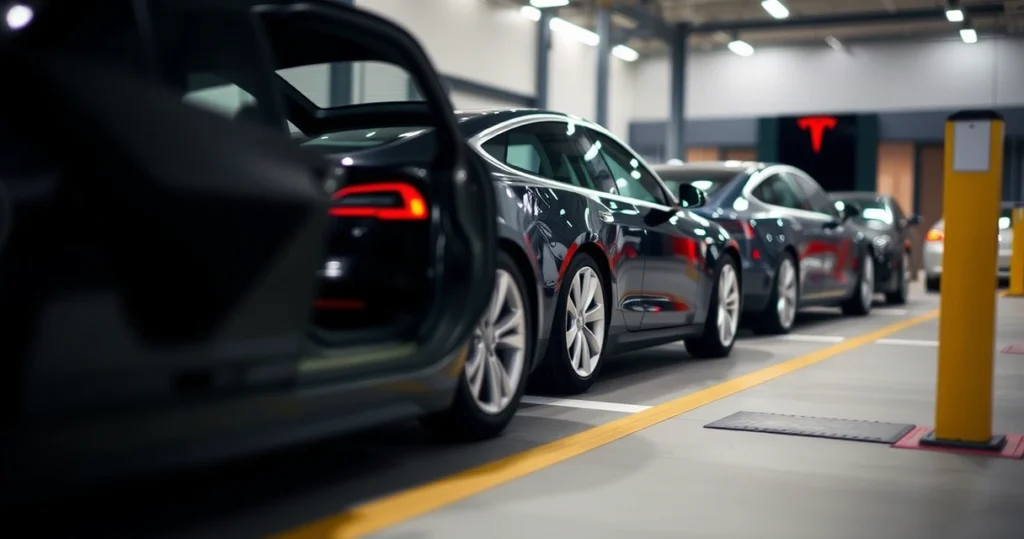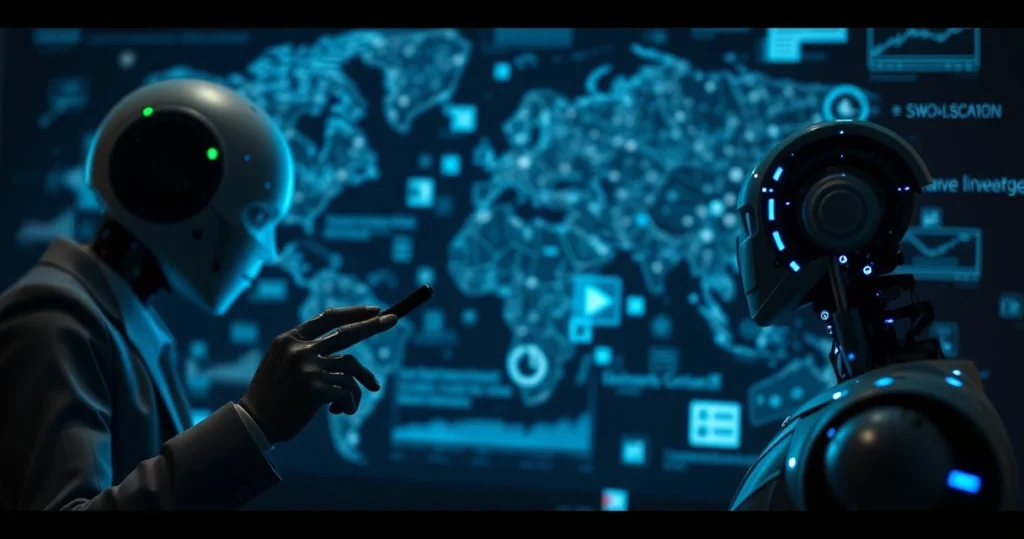Tesla’s Delivery Plunge: Musk’s Controversy and Aging Models Impact Demand
Tesla, the electric vehicle (EV) pioneer that has reshaped the automotive landscape, recently reported a significant decline in vehicle deliveries. In the second quarter of 2023, the company delivered 384,122 vehicles, a sharp 13.5% drop from the 443,956 units delivered in the same quarter last year. This downturn has raised alarms among investors and analysts alike, as it marks the second consecutive annual sales decline for the company.

The decline in Tesla’s deliveries is attributed to a combination of factors, primarily a backlash against CEO Elon Musk’s controversial political stances and an aging lineup of vehicles. As Tesla’s competition strengthens and consumers’ preferences evolve, the company’s market position faces unprecedented challenges. This article explores the implications of these developments for Tesla, its leadership, and the broader EV market.
The Current State of Tesla’s Deliveries
In the competitive landscape of the automotive industry, delivery numbers serve as a crucial indicator of a company’s performance. For Tesla, the latest figures reveal a concerning trend. Analysts had anticipated a delivery figure of approximately 394,378 vehicles, but the actual number fell short, leading to a wave of speculation about the company’s future. The mismatch between expectations and reality underscores the growing uncertainty surrounding Tesla’s demand.
Factors Influencing Delivery Numbers
- Political Backlash: Elon Musk’s political views and public statements have sparked significant controversy, leading to a polarized customer base. This polarizing effect can impact consumer sentiment and, consequently, demand for Tesla vehicles.
- Aging Vehicle Lineup: With the market evolving, Tesla’s models, some of which have been on the market for several years, face stiff competition from newer, more technologically advanced offerings from rivals.
- Increased Competition: As global interest in electric vehicles grows, traditional automakers and new startups are entering the market with compelling alternatives, making it imperative for Tesla to innovate continually.
- Economic Factors: Broader economic conditions, including inflation and interest rates, may also deter potential buyers from making significant purchases like electric vehicles.
Elon Musk’s Controversial Stance
Elon Musk, Tesla’s charismatic and often polarizing CEO, has made headlines not only for his business acumen but also for his outspoken political views. His controversial statements, especially on social media platforms, have led to public backlash. Many potential customers have expressed discomfort with Musk’s positions, which could translate to reduced demand for Tesla vehicles.
The Impact of Social Media
Musk’s significant presence on social media has been a double-edged sword. While it has helped elevate Tesla’s brand and engage fans, it has also alienated certain segments of the population. Potential buyers may hesitate to invest in a vehicle associated with a leader whose views do not align with their own, affecting overall sales.
The Aging Vehicle Lineup
Another critical factor in Tesla’s delivery decline is its aging vehicle lineup. While Tesla was once at the forefront of EV innovation, some of its flagship models, such as the Model S and Model X, have not seen significant updates in recent years. As competitors release new models with advanced features, Tesla’s older vehicles may struggle to attract buyers looking for the latest technology and design.
Comparative Analysis of Competitors
Other automakers have recognized the growing demand for electric vehicles and are launching new models that cater to consumer preferences. Brands like Ford, General Motors, and Rivian are making substantial investments in EV technology, introducing vehicles that compete directly with Tesla’s offerings. Consumers are now presented with more choices, which could be siphoning off Tesla’s customer base.
Future Implications for Tesla
The recent decline in vehicle deliveries raises important questions about Tesla’s future trajectory. As demand fluctuates and competition intensifies, the company must adapt to maintain its market share. Here are some potential implications:
- Innovation and Model Refreshes: Tesla may need to accelerate the development of new models and refresh existing ones to remain competitive. This could involve introducing features that align with consumer expectations and market trends.
- Marketing Strategy Overhaul: Tesla might need to consider revising its marketing strategy to counteract the negative perceptions surrounding Musk’s public persona. A more inclusive and neutral approach could help rebuild trust with potential customers.
- Expansion of Production Capacity: To meet evolving demand and remain competitive, Tesla could focus on expanding its production capabilities and exploring new markets.
Frequently Asked Questions (FAQ)
1. Why did Tesla’s deliveries drop in the second quarter of 2023?
The drop in Tesla’s deliveries can be attributed to a combination of factors, including Elon Musk’s controversial political stance, an aging vehicle lineup, increased competition, and broader economic conditions affecting consumer purchasing power.
2. How does Elon Musk’s political stance affect Tesla’s sales?
Musk’s polarizing political views have led to backlash from certain customer segments, which may discourage potential buyers from purchasing Tesla vehicles due to a perceived misalignment of values.
3. What models are contributing to Tesla’s aging vehicle lineup?
Key models in Tesla’s aging lineup include the Model S and Model X, which have not undergone significant updates or redesigns in recent years, leading to concerns about their competitiveness against newer offerings from rival manufacturers.
4. What are Tesla’s competitors doing to gain market share?
Competitors like Ford, General Motors, and Rivian are introducing new electric vehicle models with advanced technology and features, making them attractive alternatives for consumers who may have previously considered Tesla.
5. What steps might Tesla take to address declining demand?
Tesla may need to innovate and refresh its vehicle lineup, revise its marketing strategies, and expand production capabilities to address declining demand and enhance its competitive position in the market.
Conclusion
The recent plunge in Tesla’s vehicle deliveries signals a critical moment for the company, highlighting the challenges it faces amid changing consumer preferences and increased competition. Elon Musk’s controversial public persona and the aging vehicle lineup have also contributed to this decline. To navigate these challenges, Tesla must prioritize innovation and adapt its strategies to align with consumer expectations. As the EV market continues to evolve, it will be crucial for Tesla to respond effectively to maintain its position as a leader in the electric vehicle space.
📰 Original Source
Este artigo foi baseado em informações de: https://www.theguardian.com/technology/2025/jul/02/tesla-delivery-demand-drop-elon-musk



